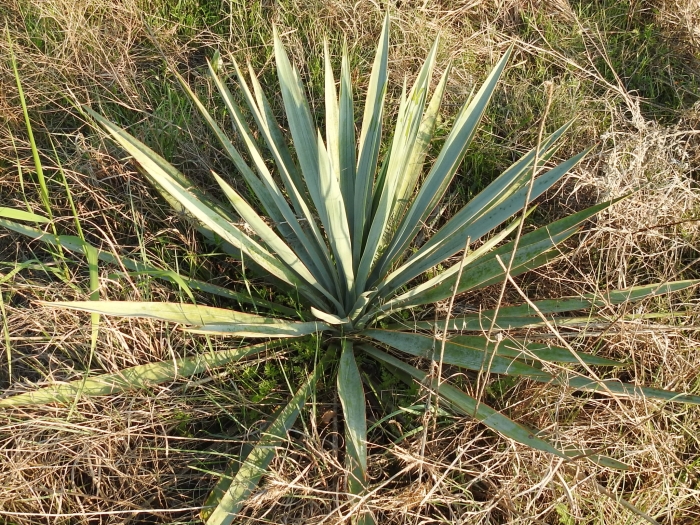Pale Yucca
(Yucca pallida)
Pale Yucca (Yucca pallida)
/
/

Sam Kieschnick
CC BY 4.0
Image By:
Sam Kieschnick
Recorded By:
Copyright:
CC BY 4.0
Copyright Notice:
Photo by: Sam Kieschnick | License Type: CC BY 4.0 | License URL: http://creativecommons.org/licenses/by/4.0/ | Rights Holder: Sam Kieschnick | Publisher: iNaturalist | Date Created: 2017-03-18T05:59:50-07:00 |




















































Estimated Native Range
Summary
Yucca pallida, commonly known as Pale Yucca, is a perennial herb native to the blackland prairies and grasslands of northern and central Texas, as well as to some regions of Northern Mexico. It typically grows to 20–50 cm tall and 30–80 cm in diameter, with a distinctive rosette form. The leaves are 15–40 cm long and 2–3 cm wide, being widest around the midpoint, and range in color from pale blue-gray to sage-green. The leaves have a yellow to brown terminal spine and may exhibit some waviness or rolling along the edges. The inflorescence is a tall panicle, 1–2.5 m in height, bearing up to 100 bell-shaped flowers that are light green to cream in color and each measure 5–7 cm in length. Flowering typically occurs in the spring and can be quite showy.
Pale Yucca is appreciated for its drought tolerance and unique foliage color, making it an attractive choice for xeriscaping, rock gardens, and as an accent plant in water-wise landscapes. It is also valued for its moderate hardiness, surviving temperatures down to −18 °C (0 °F). This species thrives in full sun to part shade and requires minimal water once established, preferring well-drained soils. While it is not commonly found in horticulture, its ease of maintenance and striking appearance when in bloom make it a viable option for gardeners seeking a low-maintenance plant.CC BY-SA 4.0
Pale Yucca is appreciated for its drought tolerance and unique foliage color, making it an attractive choice for xeriscaping, rock gardens, and as an accent plant in water-wise landscapes. It is also valued for its moderate hardiness, surviving temperatures down to −18 °C (0 °F). This species thrives in full sun to part shade and requires minimal water once established, preferring well-drained soils. While it is not commonly found in horticulture, its ease of maintenance and striking appearance when in bloom make it a viable option for gardeners seeking a low-maintenance plant.CC BY-SA 4.0
Plant Description
- Plant Type: Succulent
- Height: 1-2 feet
- Width: 2-3 feet
- Growth Rate: Moderate
- Flower Color: White
- Flowering Season: Spring
- Leaf Retention: Evergreen
Growth Requirements
- Sun: Full Sun, Part Shade
- Water: Low, Very Low
- Drainage: Fast
Common Uses
Bee Garden, Bird Garden, Butterfly Garden, Deer Resistant, Drought Tolerant, Fire Resistant, Fragrant, Groundcover, Hummingbird Garden, Low Maintenance, Potted Plant, Rabbit Resistant, Rock Garden, Showy Flowers, Street Planting
Natural Habitat
Blackland prairies and grasslands of northern and central Texas, as well as some regions of Northern Mexico
Other Names
Common Names: Twistleaf Yucca
Scientific Names: , Yucca pallida, Yucca rupicola var. edentata, Yucca pallida var. edentata,
GBIF Accepted Name: Yucca pallida McKelvey